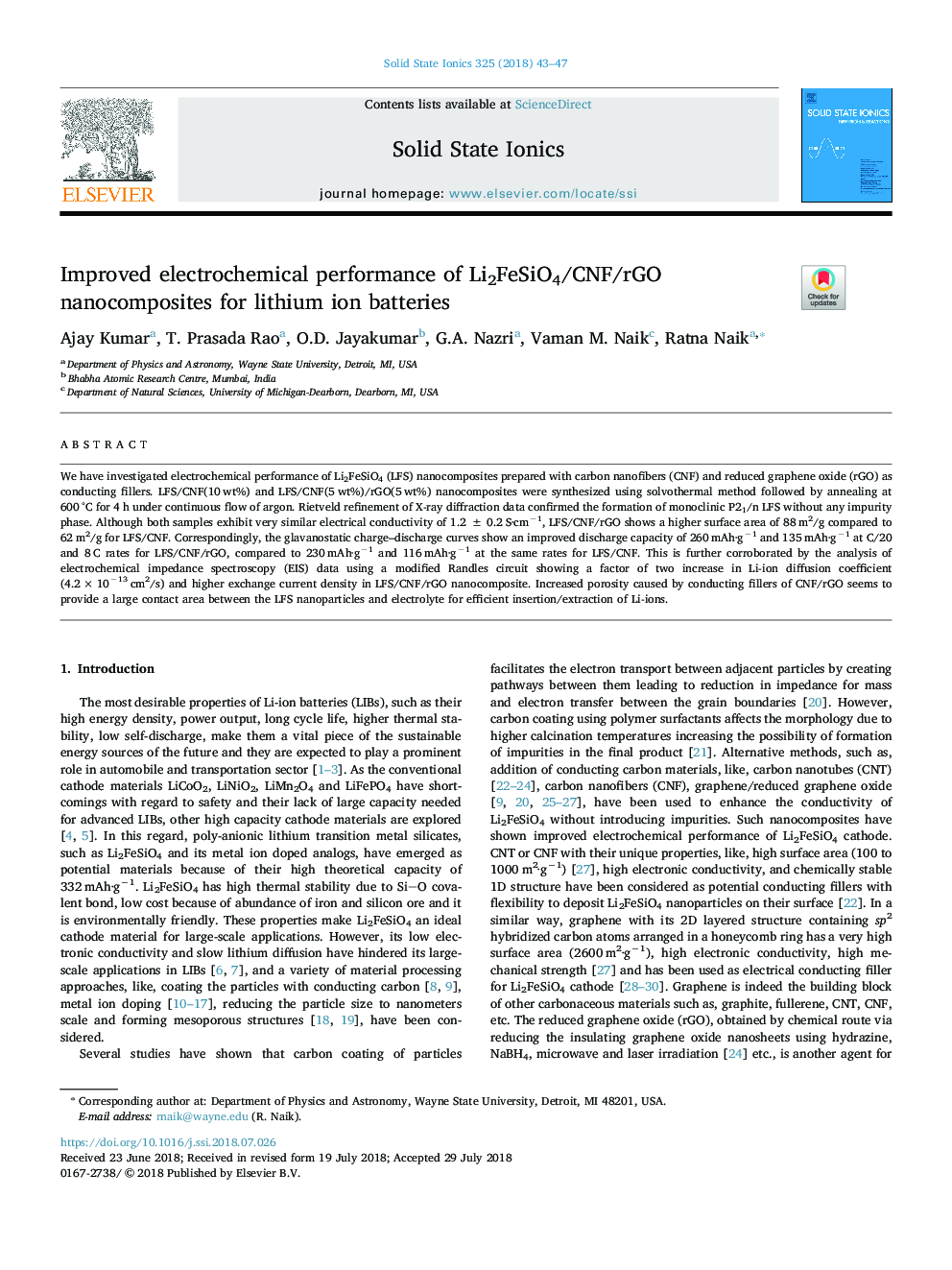| Article ID | Journal | Published Year | Pages | File Type |
|---|---|---|---|---|
| 7744164 | Solid State Ionics | 2018 | 5 Pages |
Abstract
We have investigated electrochemical performance of Li2FeSiO4 (LFS) nanocomposites prepared with carbon nanofibers (CNF) and reduced graphene oxide (rGO) as conducting fillers. LFS/CNF(10â¯wt%) and LFS/CNF(5â¯wt%)/rGO(5â¯wt%) nanocomposites were synthesized using solvothermal method followed by annealing at 600â¯Â°C for 4â¯h under continuous flow of argon. Rietveld refinement of X-ray diffraction data confirmed the formation of monoclinic P21/n LFS without any impurity phase. Although both samples exhibit very similar electrical conductivity of 1.2â¯Â±â¯0.2â¯S·cmâ1, LFS/CNF/rGO shows a higher surface area of 88â¯m2/g compared to 62â¯m2/g for LFS/CNF. Correspondingly, the glavanostatic charge-discharge curves show an improved discharge capacity of 260â¯mAh·gâ1 and 135â¯mAh·gâ1 at C/20 and 8â¯C rates for LFS/CNF/rGO, compared to 230â¯mAh·gâ1 and 116â¯mAh·gâ1 at the same rates for LFS/CNF. This is further corroborated by the analysis of electrochemical impedance spectroscopy (EIS) data using a modified Randles circuit showing a factor of two increase in Li-ion diffusion coefficient (4.2â¯Ãâ¯10â13â¯cm2/s) and higher exchange current density in LFS/CNF/rGO nanocomposite. Increased porosity caused by conducting fillers of CNF/rGO seems to provide a large contact area between the LFS nanoparticles and electrolyte for efficient insertion/extraction of Li-ions.
Related Topics
Physical Sciences and Engineering
Chemistry
Electrochemistry
Authors
Ajay Kumar, T. Prasada Rao, O.D. Jayakumar, G.A. Nazri, Vaman M. Naik, Ratna Naik,
